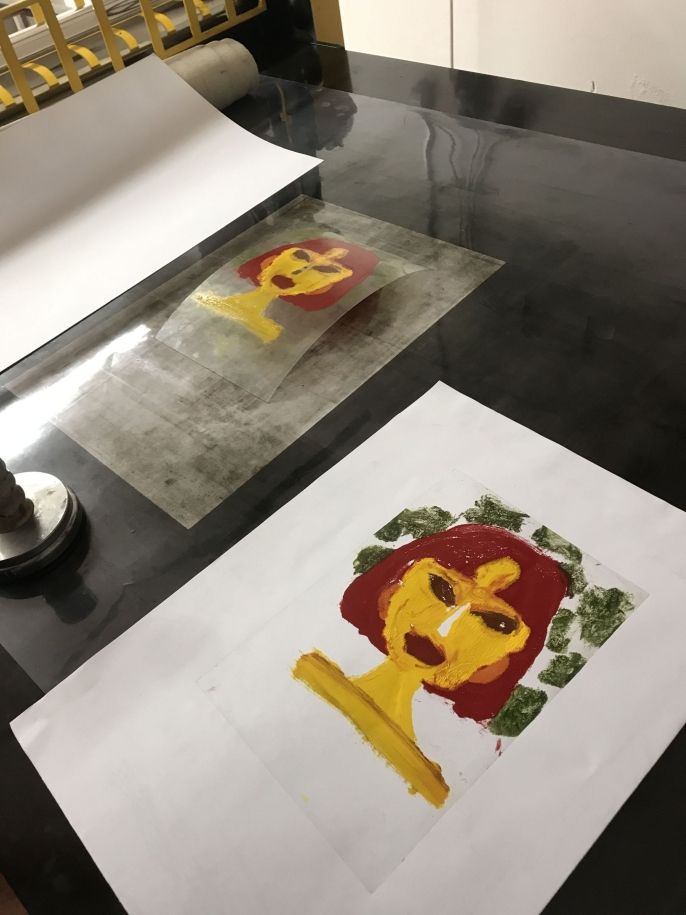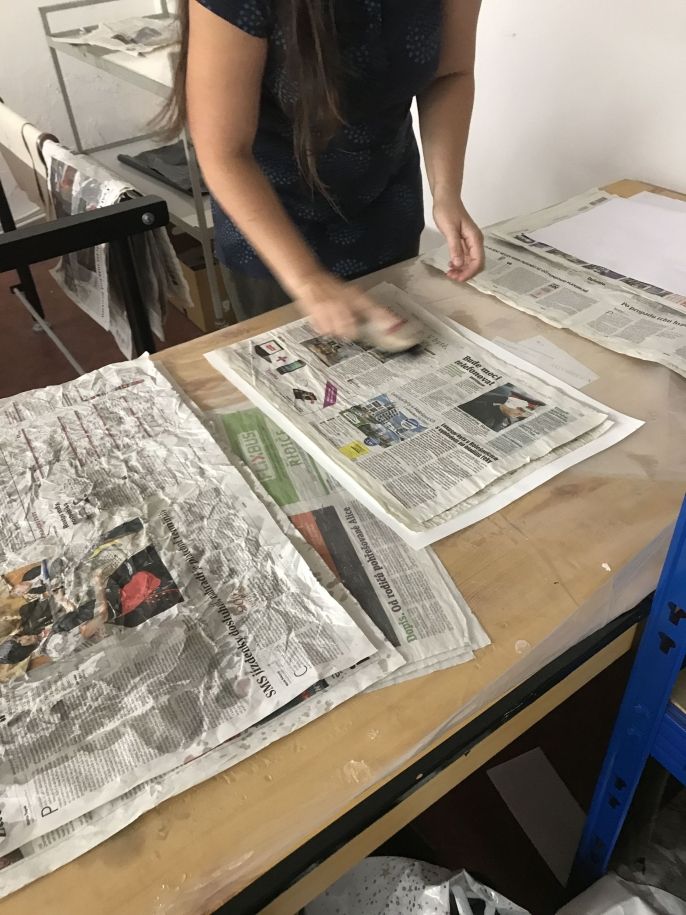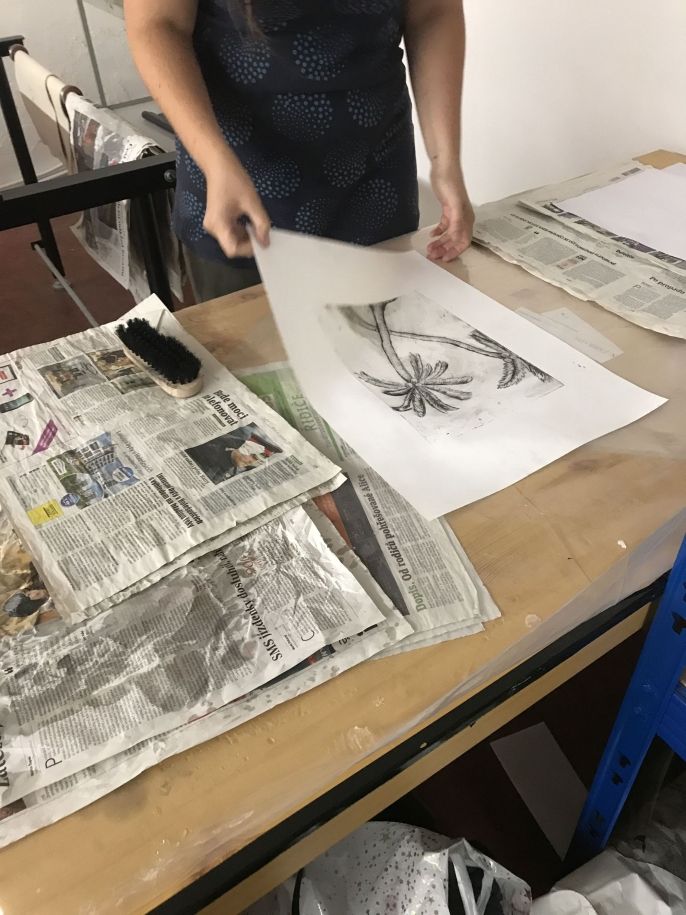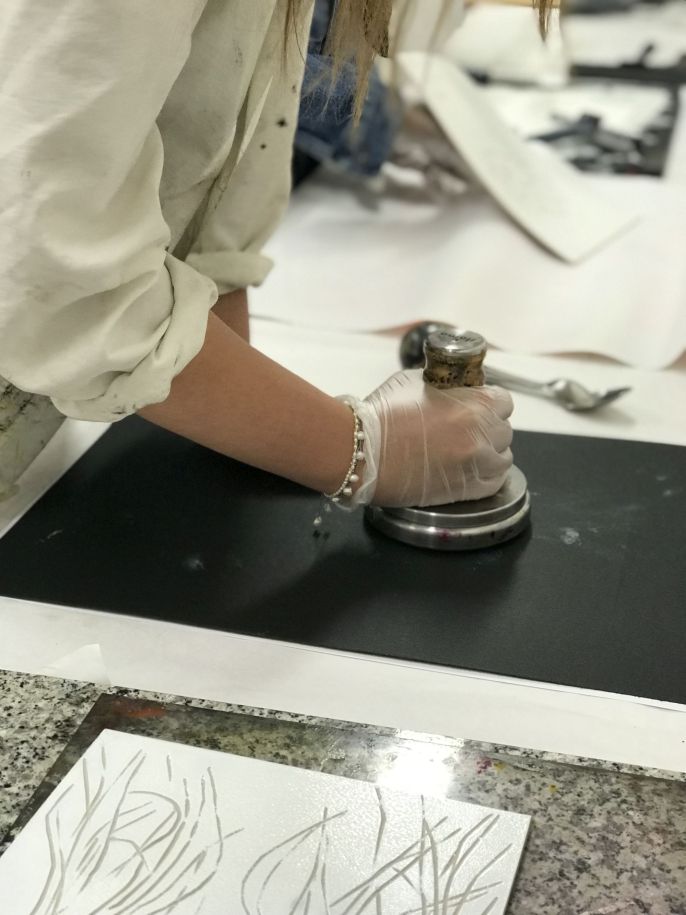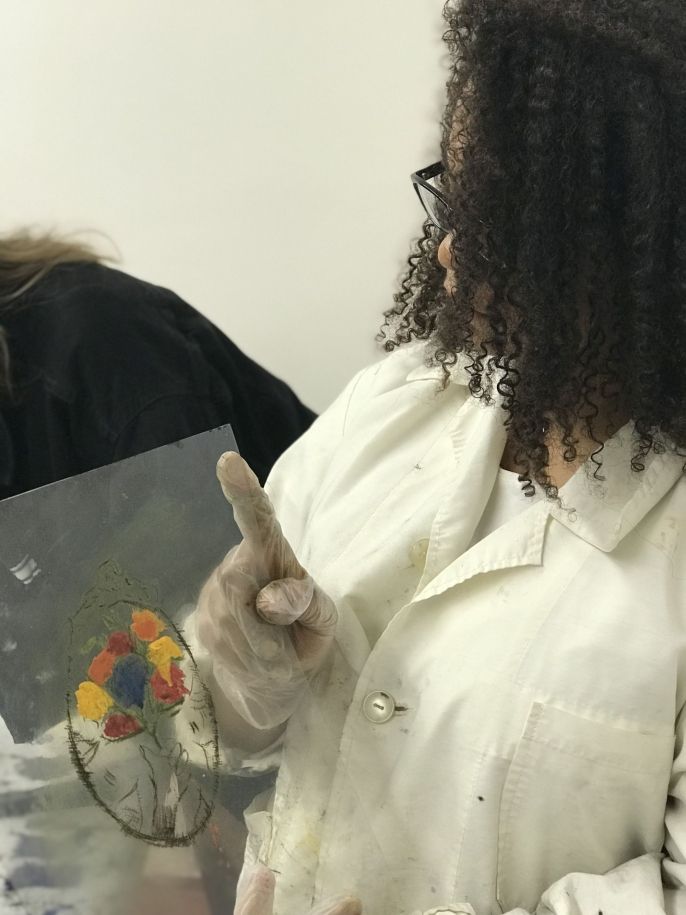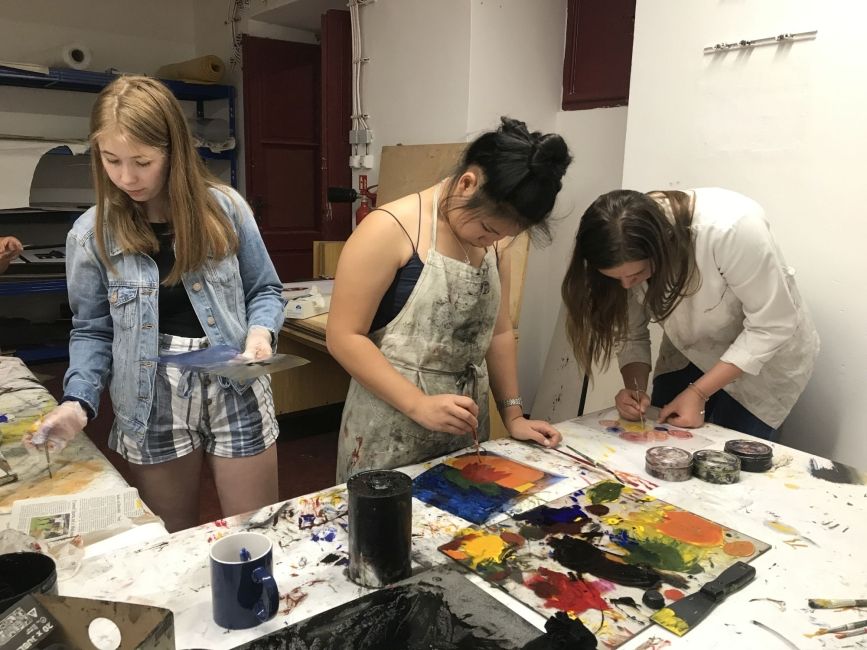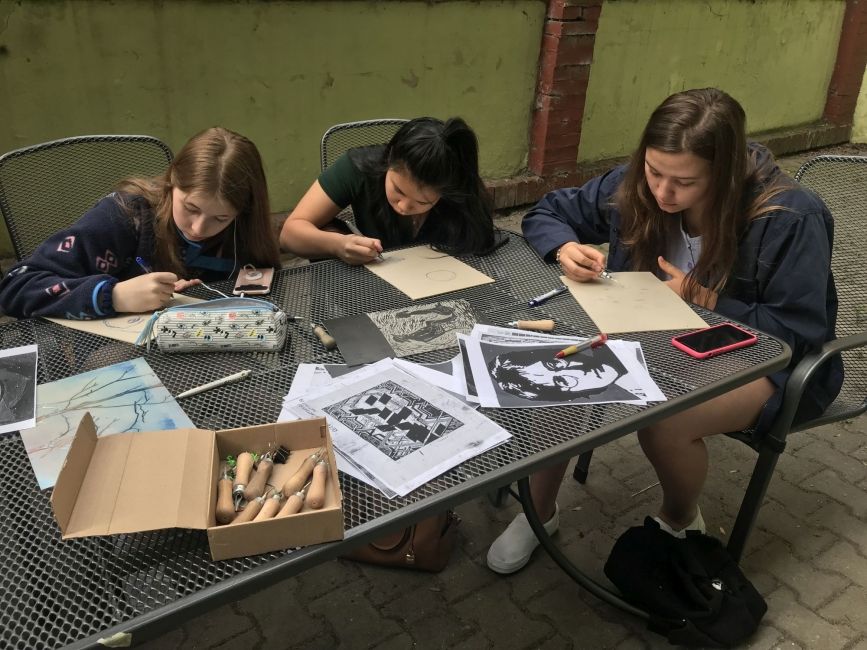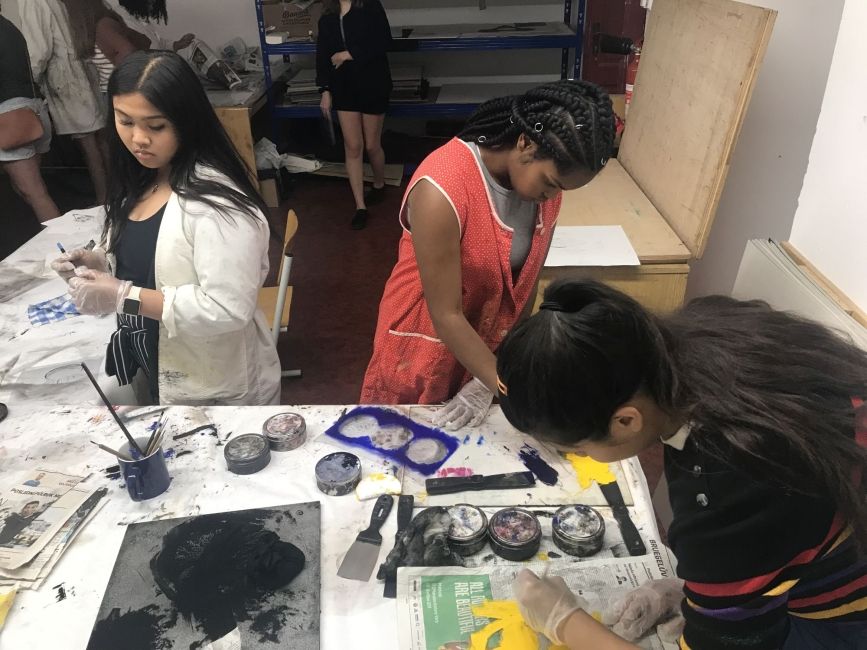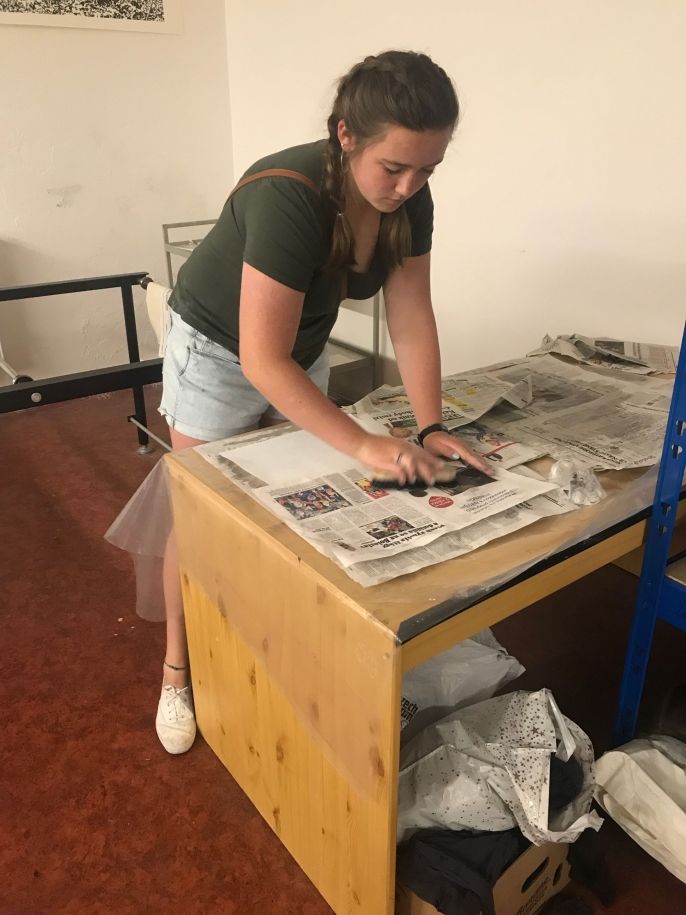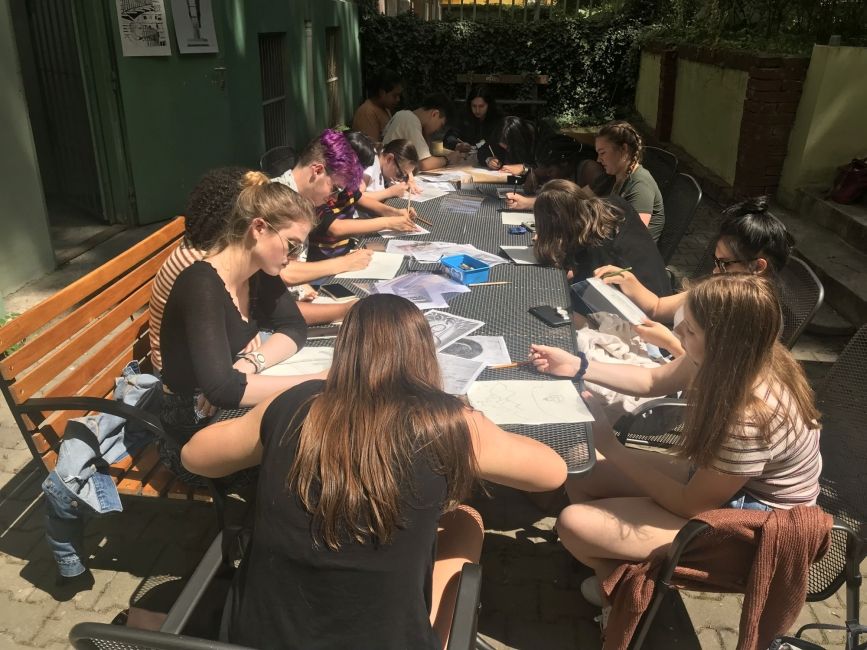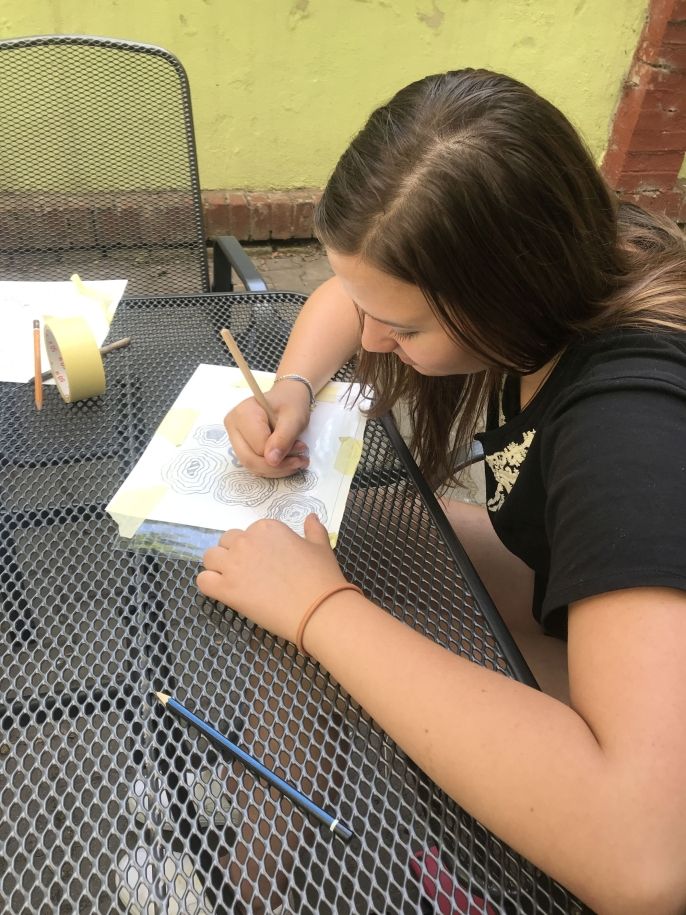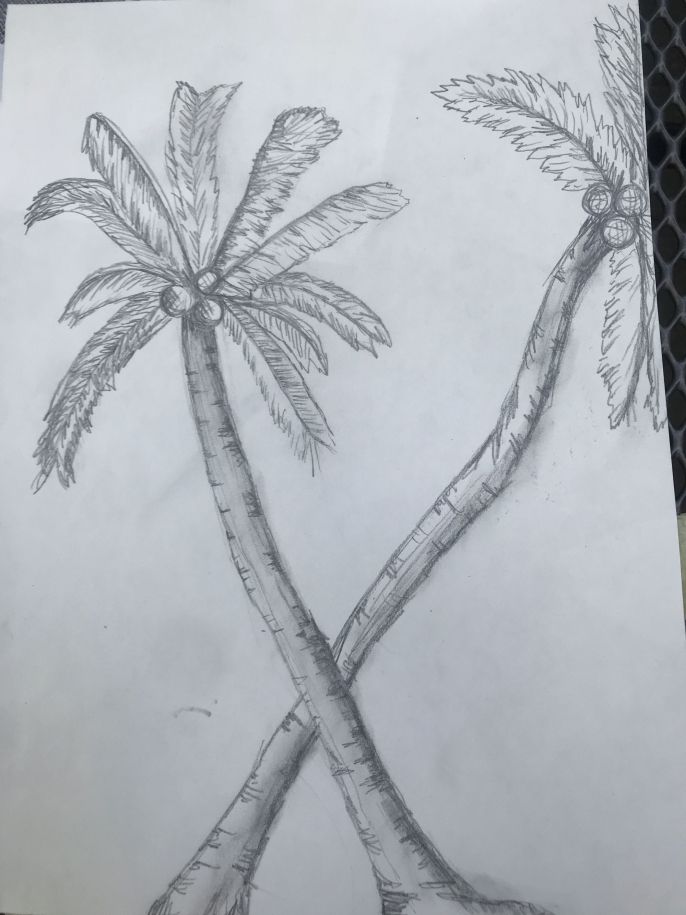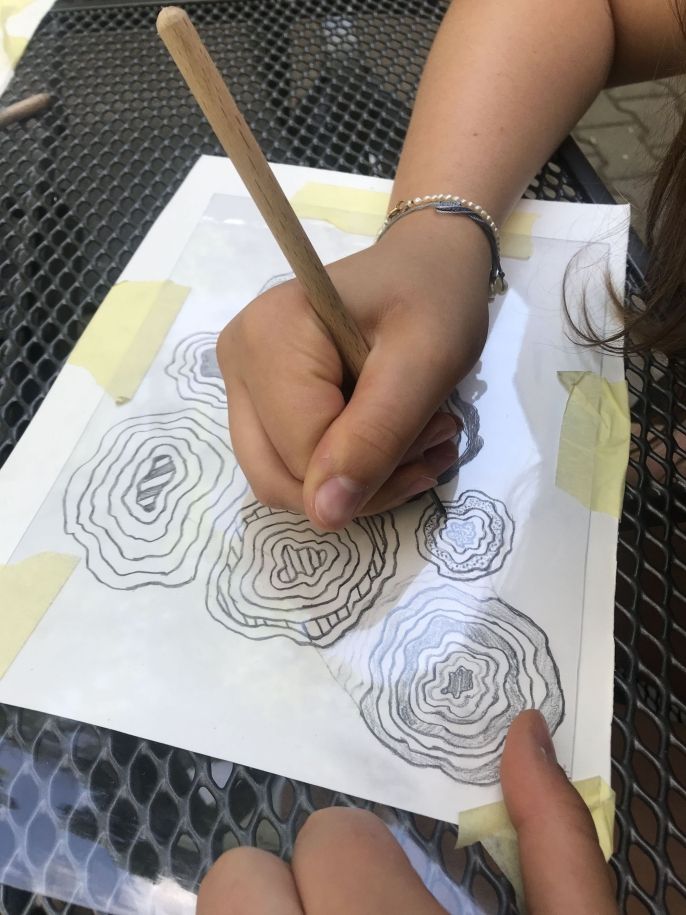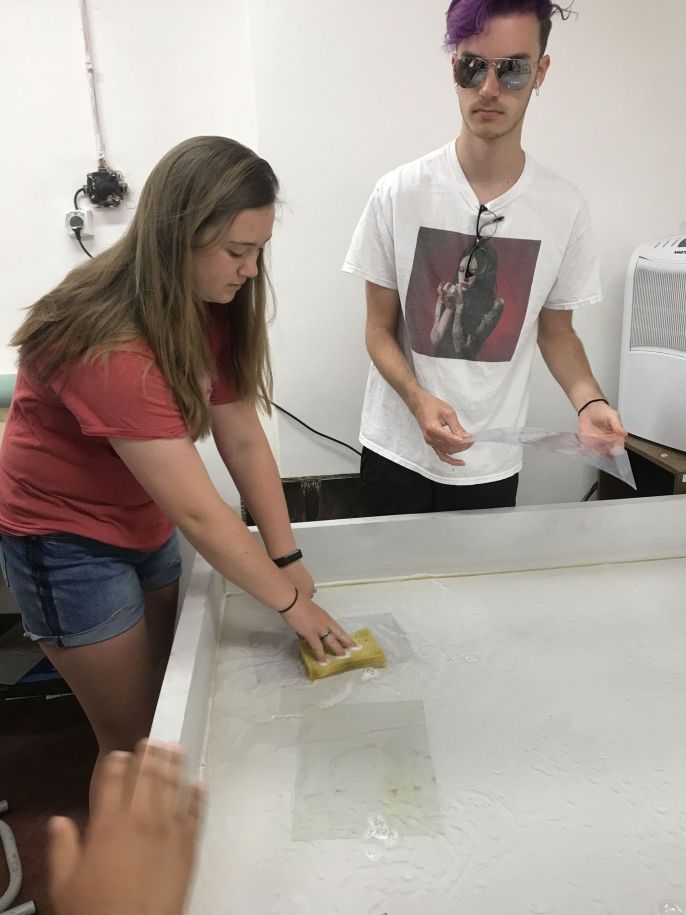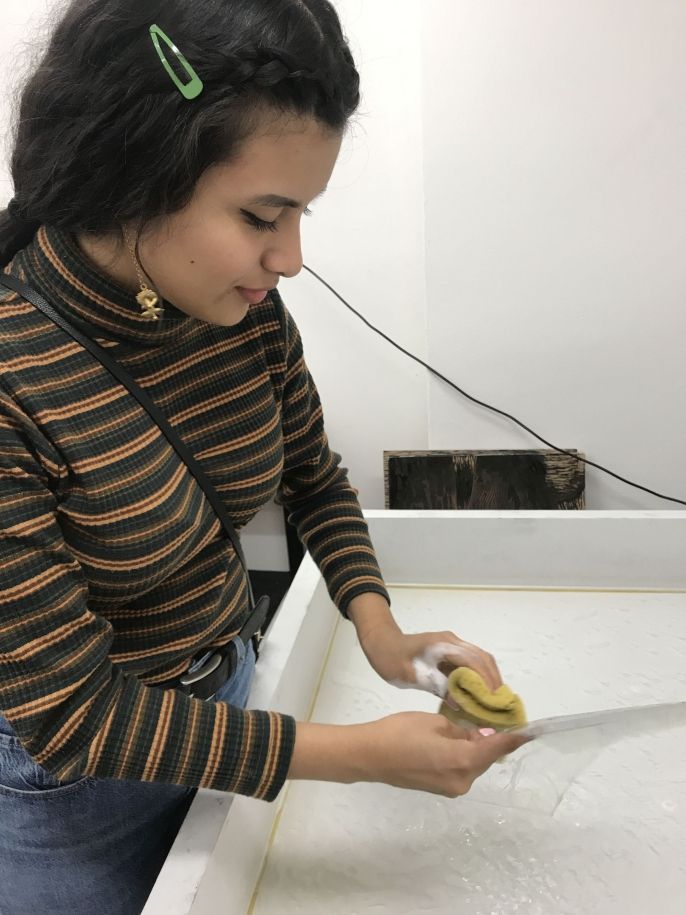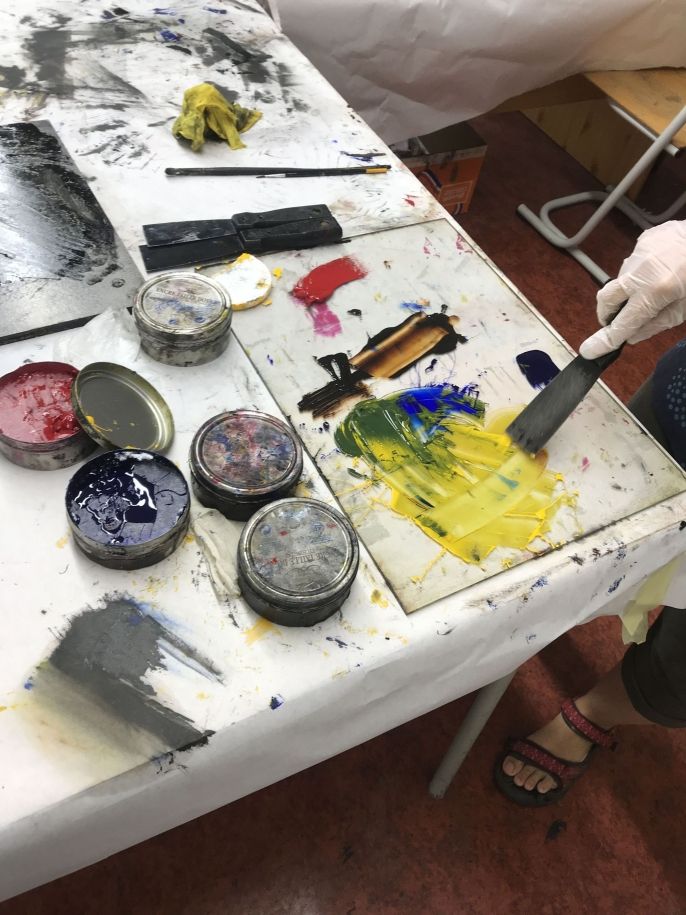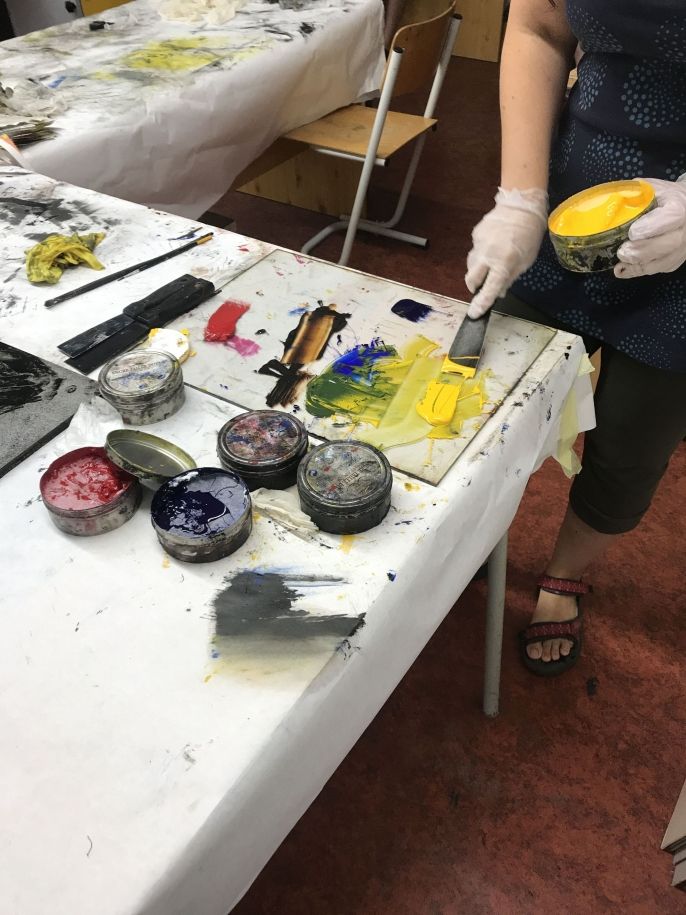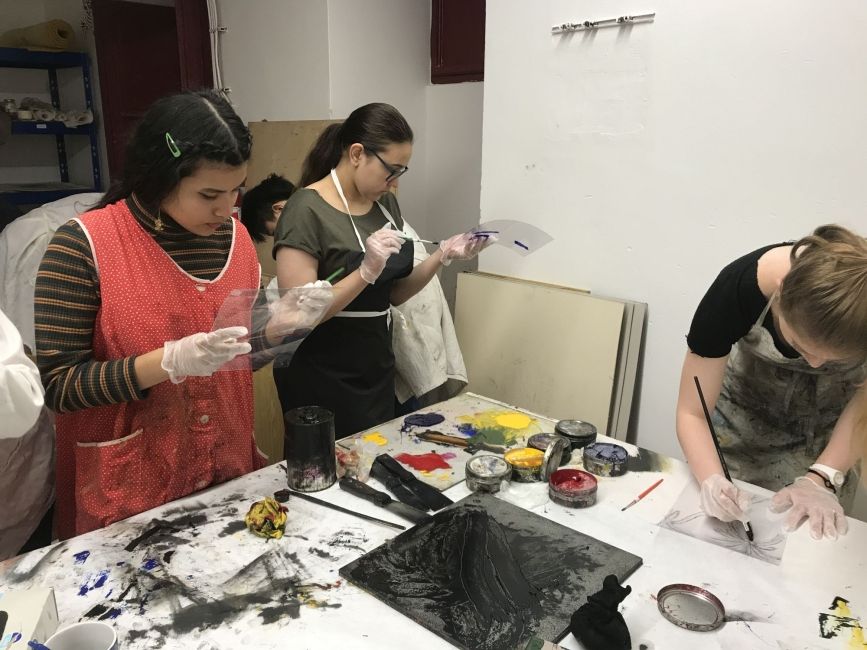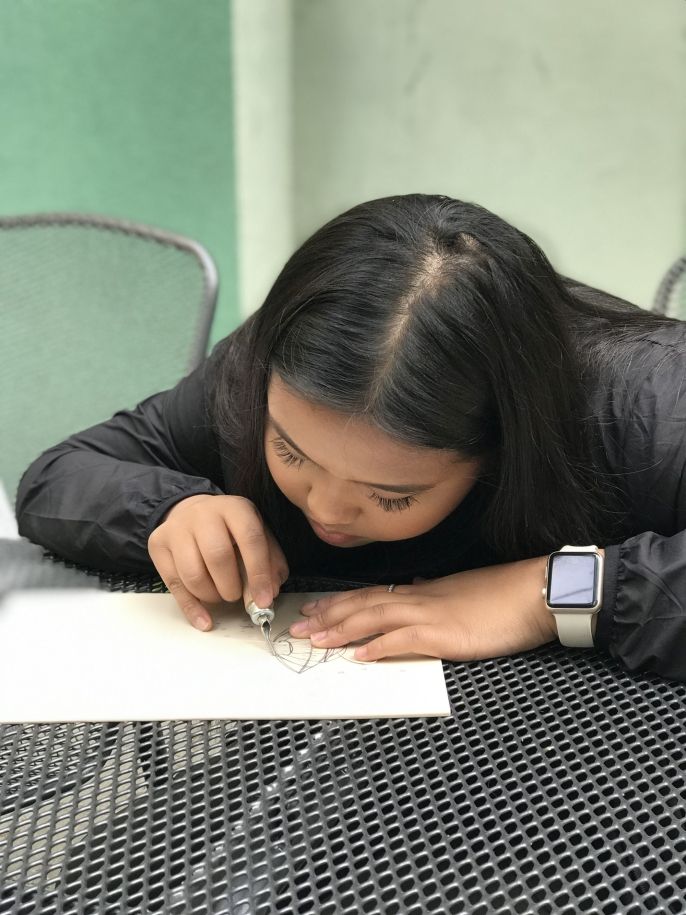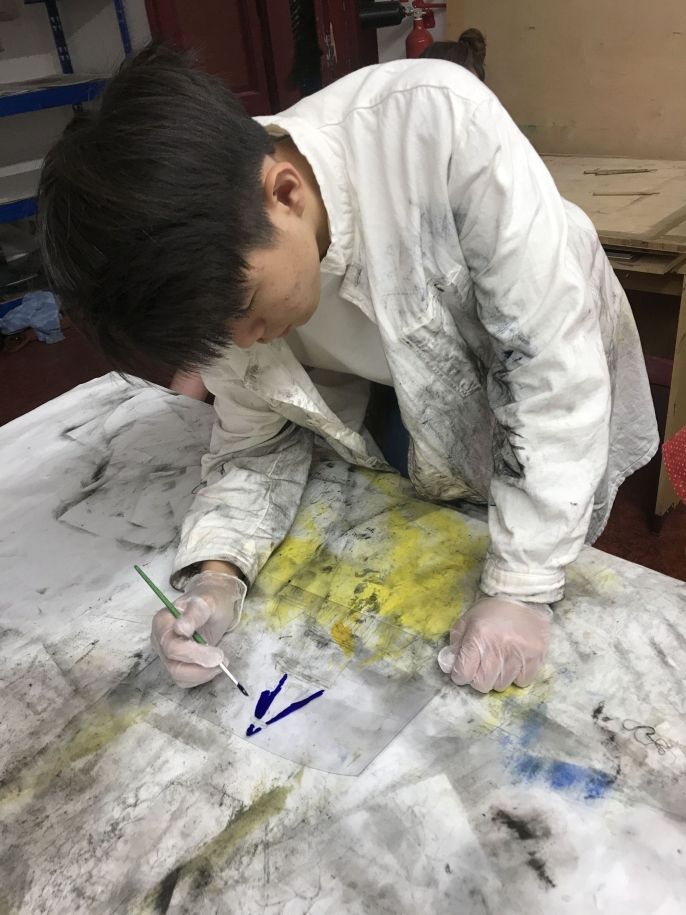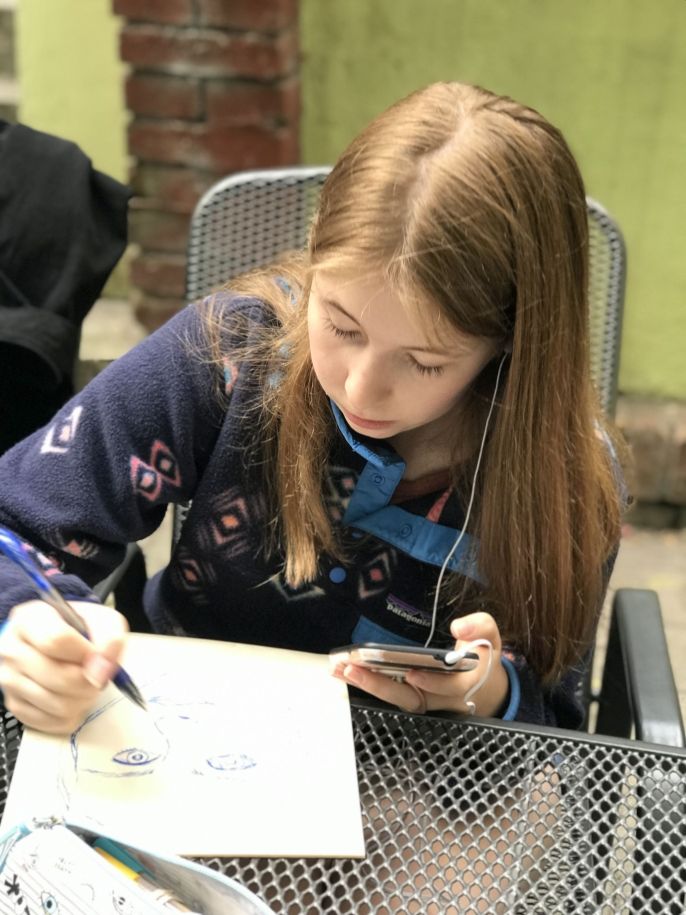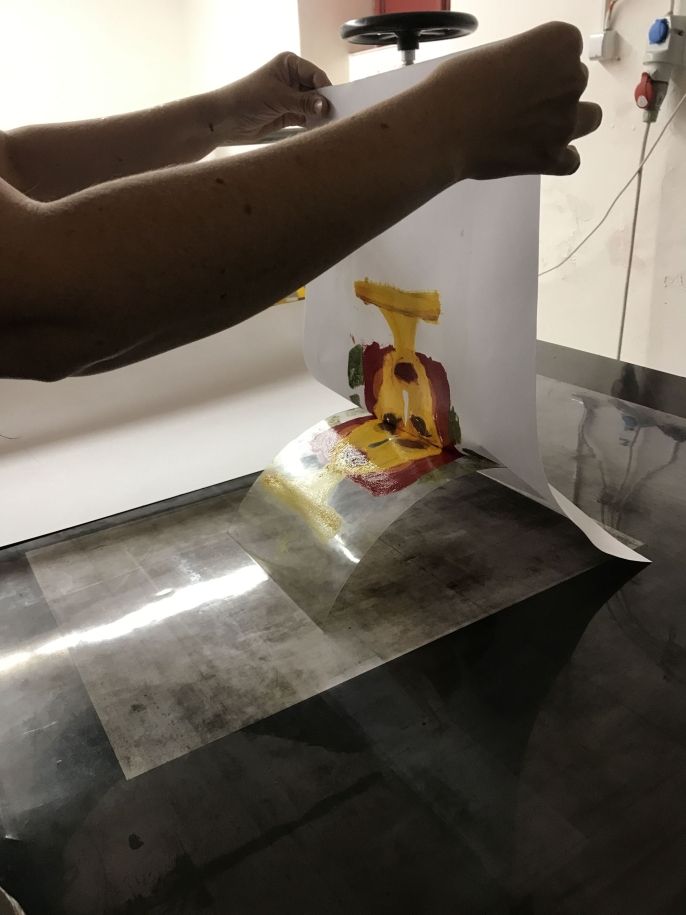The Art of Printmaking
It's been a long and awesome week here in Prague! Every day our students attend a three-hour art class at the Art and Design Insistute in Prague. This week's focus: printmaking! Printmaking is one of my favorite mediums because of its hands-on approach; it's like a blend of sculpting and painting that results in a unique work of art. I also find printmaking to be rather accessible and inexpensive compared to other mediums because it requires few tools, and common household items can even be repurposed as presses and etching plates. This week we've focused on two specific kinds of printmaking: monotyping and linocut. Monotyping is a drawing made on a non-absorbent etching plate, in our case plexiglass. We began our monotypes by drawing an image on a sheet of paper. A piece of plexiglass was then placed on top and the image was traced using a special needle-point tool which carves the plexiglass. Once the etching process was complete, we added oil ink to the outlined image and pressed it through an industrial pressing machine. Although challenging, our students all enjoyed learning this style of printmaking and found it easy to transition to the second printing technique, linocut.
Although monotypes and linocuts share many similarities, they vary in the etching plate used and in the printing style. Linoleum, not plexiglass, is used as a relief surface and is carefully carved out using chisels and gouges. Unlike monotypes, linocuts produce a reverse image of what is drawn. The thick lines produced by the gouges result in deeply pronounced, sometimes harsh lines. Because linoleum is rubbery and softer compared to plexiglass, many also find it to be the easier of the two printing styles.
Although they differ in substanial ways, both printing types allow for experimentation, especially with color. With monotyping, color can be applied inside the deeply creviced lines, producing a colored outline once pressed. Color can also be applied to the smooth empty spaces, producing a "block" result, or the order of inking can be changed to produce a unique look. With monotypes, even texturization can be added to of the etching plate to further develop the complexities of the print. Although linocuts are slightly more limited in the techniques used, one cool way to spice up this kind of print is to paint color first directly on the paper and then on top print the linoleum. This produces a gradient and rainbow effect unique to linocuts.
Throughout the week, the students will continue to develop their printmaking skills and are looking forward to analzying the progression of their works!
Related Posts
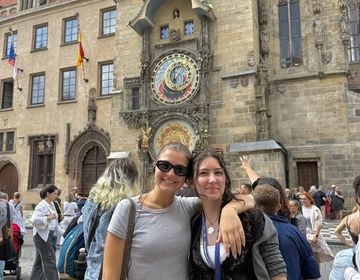
From Lessons to Landmarks: Our First Steps in Prague
In their first few days abroad, our HSSA Prague students stepped into the heart of the city, where cobblestone streets lead not just to famous landmarks, but to their first... keep reading
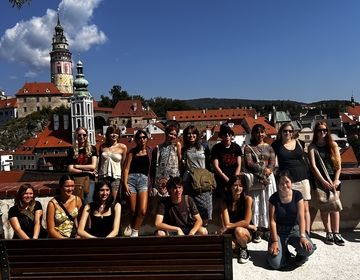
Český Krumlov Excursion
The weekend journey to Český Krumlov, a town often referred to as the "Pearl of Bohemia," began on Friday afternoon. The students left Prague filled with anticipation for what lay... keep reading
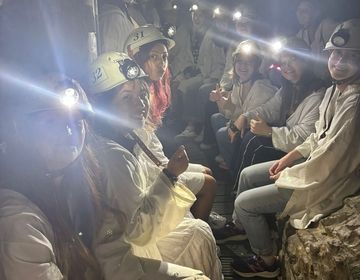
Kutná Hora: Week 1 Weekend Trip
Saturday morning began with a 9:00 AM departure from Prague, with the students buzzing with excitement for their adventure to Kutná Hora, a town steeped in rich history and famed... keep reading
